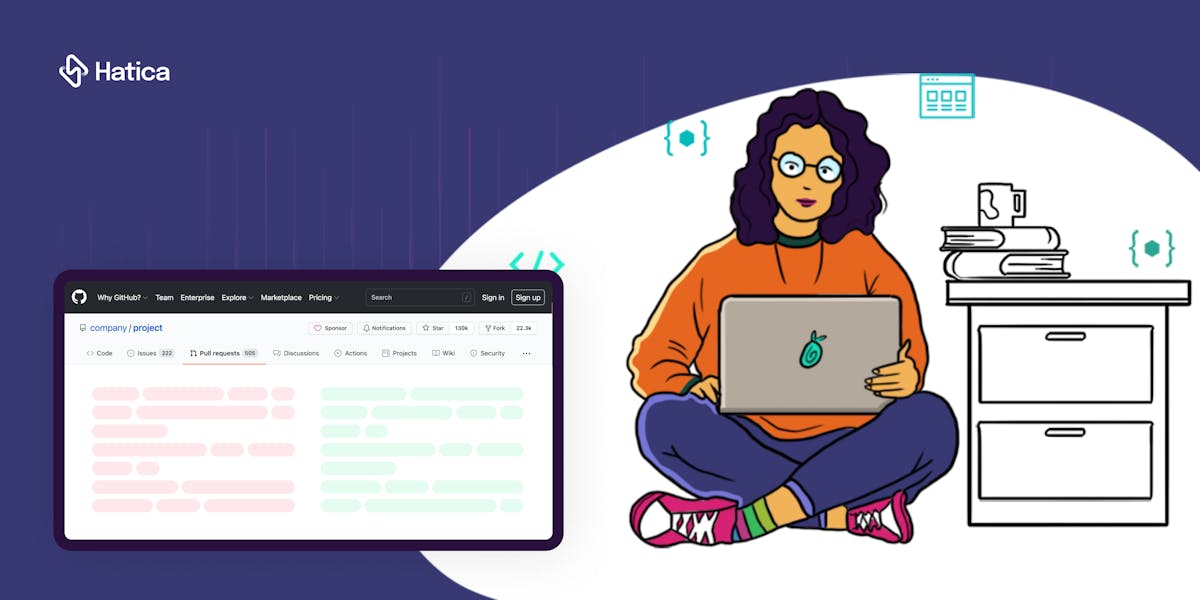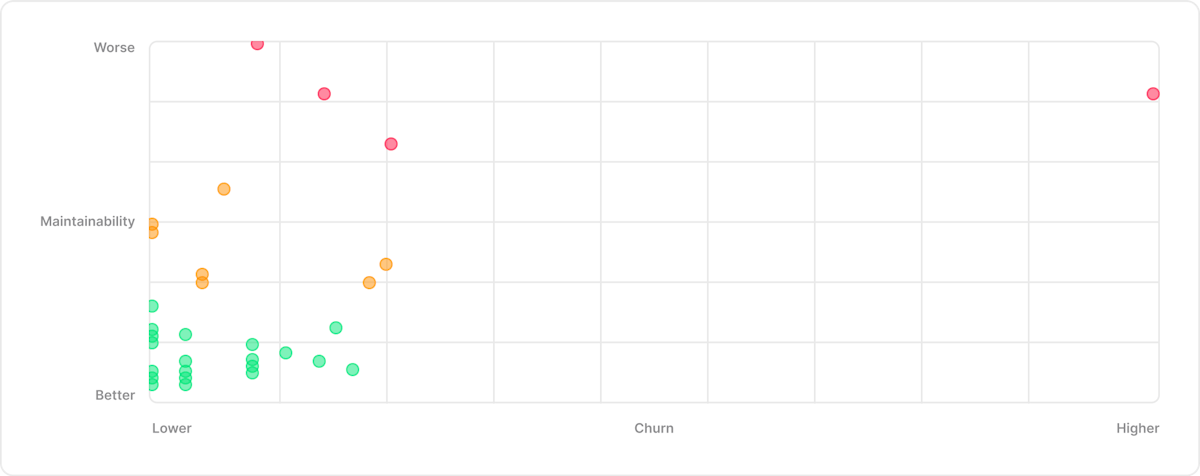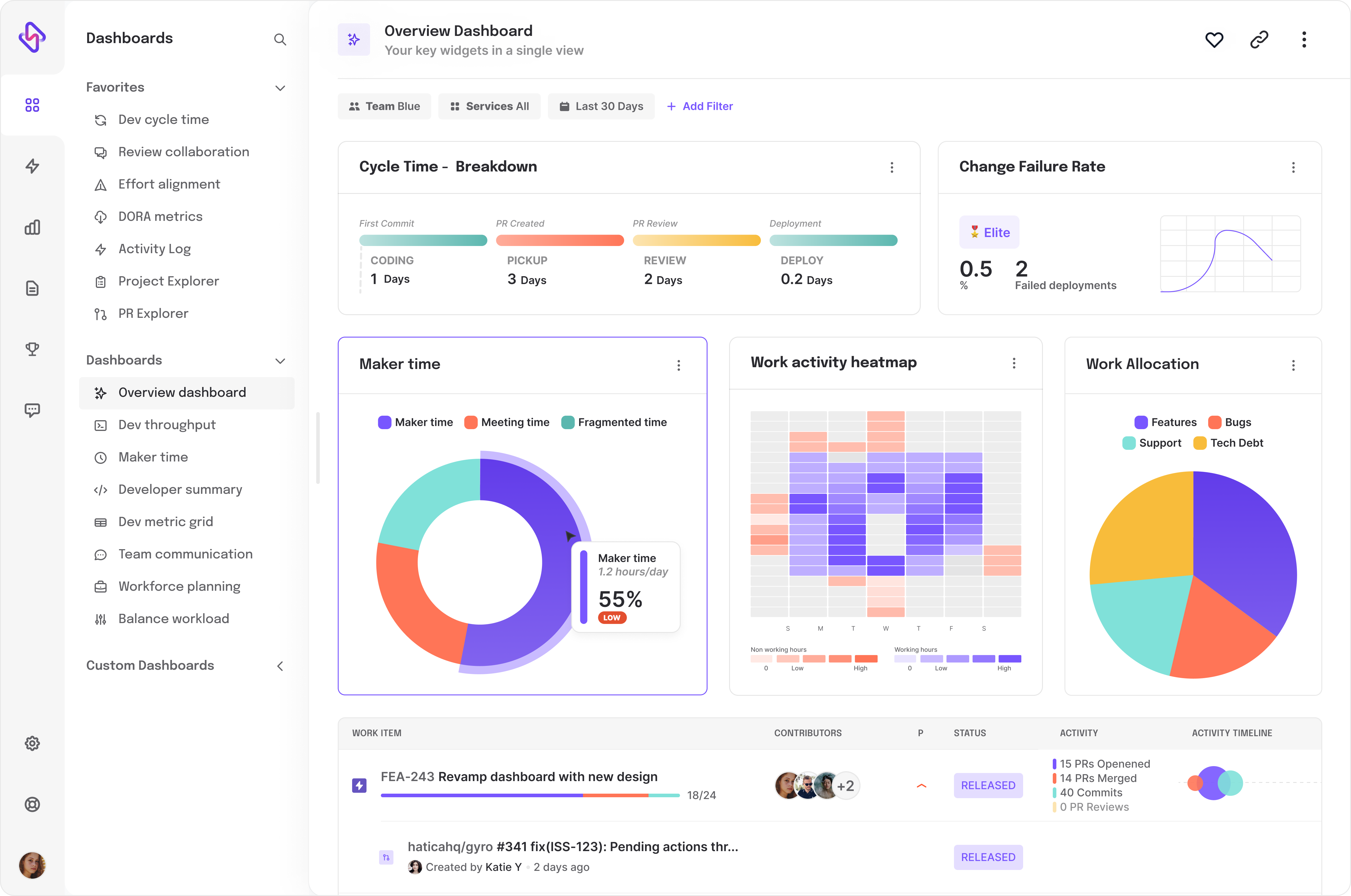The ever-growing complexity of software development demands a constant focus on code quality and collaboration. Effective code reviews, also known as a peer reviews, serve as the cornerstone of achieving both objectives. While the fundamental principles of code reviews remain timeless, the landscape of development tools and methodologies is in a state of constant evolution. This dynamic environment means that even seasoned developers can benefit from revisiting their code review practices to stay ahead of the curve.
But this blog post isn't just for experienced developers. Whether you're a team lead looking to streamline your workflow or a newcomer to coding, this post is here to guide you through the latest trends in code reviews for 2024. We'll explore the most effective practices that are shaping the landscape of code reviews today.
In this post, you'll learn how to:
- discover strategies to identify and address issues in your codebase during the development cycle, ensuring higher quality and fewer bugs down the road.
- explore techniques for writing clean, maintainable code that adapts well to changes and growth, making your projects more flexible and scalable.
- learn how to cultivate a collaborative environment where ideas flow freely, feedback is constructive, and teamwork thrives, leading to the delivery of exceptional software and Navigating the space of code reviews in 2024.
So let's jump in.
What does A Typical Code Review Life Cycle look like in 2024?
Think of code review as the final polish before your code goes live. Sure, the core steps – submitting your code, reviewing it, getting feedback, making changes, and getting approval – haven't changed much. But in 2024, there are new tools and tricks to make this process smoother and more effective.
1. Initiation and Preparation
Traditionally, code review involved sending your work off through systems like Git or Jira, allowing for early feedback and automated checks right from your development environment. Think of it as catching potential bugs before they even have a chance to hatch. In this stage, developers can also perform an initial author self-review to identify any immediate issues with their code before submitting it for peer review.
2. Review and Analysis
The reviewer meticulously examines the code, focusing on functionality, efficiency, and adherence to coding standards. In 2024, static code analysis tools can be a powerful ally, automatically identifying potential bugs and style inconsistencies.
3. Feedback and Discussion
The reviewer provides constructive feedback, highlighting areas for improvement and suggesting alternative approaches. Keep in mind, that effective communication in 2024 goes beyond text comments. Consider leveraging collaborative features in code review tools that allow for in-line discussions and code annotations for a more interactive experience.
4. Iteration and Refinement
The author revises the code based on the feedback, addressing the identified issues. Code review turnaround time is an important metric in this stage. It refers to the average time it takes for a code review to be completed, and optimizing this timeframe ensures a healthy workflow.
In some cases, the review might suggest opportunities for refactoring.
5. Approval and Integration
Once the reviewer is satisfied with the revised code, it's formally approved and integrated into the main codebase. In 2024, consider employing continuous integration and continuous delivery (CI/CD) pipelines that automate testing and deployment after successful code review.
The next section of the blog dives into why you should have clear, set practices to review code.
Why You Should Review the Code?
Effective code reviews go beyond mere validation; they are a cornerstone of modern software development practices. Sure, code reviews help identify bugs and ensure code functionality. But in 2024, they offer a treasure trove of benefits that extend far beyond basic checks. Here are compelling reasons to prioritize and invest in code reviews:
1. Quality Assurance and Bug Prevention
Beyond catching syntax errors and bugs, thorough code reviews serve as a proactive quality assurance measure. Reviewers can identify potential logic errors, edge cases, and performance bottlenecks that automated testing might overlook.
By detecting and addressing issues early in the development cycle, code reviews significantly reduce the likelihood of critical bugs reaching production, enhancing overall software reliability.
2. Knowledge Sharing and Mentorship
Code reviews are not just about evaluating code; they foster a culture of knowledge sharing and mentorship within teams. Reviewers can offer constructive feedback, share best practices, and help less experienced developers improve their coding skills. Regular peer reviews provide opportunities for team members to learn from each other, leading to a more cohesive and skilled development team.
3. Maintainability and Code Consistency
Consistent coding standards and practices are crucial for maintaining large codebases over time. Code reviews enforce these standards by ensuring that all code contributions adhere to established guidelines.
By promoting clean, readable, and maintainable code, reviews make it easier for developers to understand and modify existing code, reducing technical debt and enhancing long-term maintainability.
4. Risk Mitigation and Compliance
Code reviews play a vital role in risk management and compliance, especially in regulated industries. Reviewing code helps identify security vulnerabilities, potential data breaches, or compliance issues early in the development process.
By addressing these concerns during code reviews, teams can mitigate risks and ensure that software meets security and regulatory requirements.
5. Team Collaboration and Accountability
Code reviews facilitate collaboration and accountability within development teams. They encourage open communication, constructive feedback, and collective ownership of code quality.
Regular reviews promote a sense of responsibility among team members, fostering a culture of continuous improvement and mutual support.
In the next section of this blog, we'll dive into the best practices for conducting effective code reviews in 2024, exploring the optimal code review lifecycle and strategies to maximize the benefits outlined above.
6. Reducing High Cycle Time
It's important to recognize that revisiting code increases cognitive load. The longer it has been since a developer wrote the original code, the more challenging it becomes for them to re-engage with the codebase effectively.
This situation leads to idle time as developers struggle to re-familiarize themselves with their own code before making revisions. Consequently, both context switching and idle time represent major productivity hurdles within the code review process.
Therefore, one critical challenge that an effective code review process tackles is mitigating bottlenecks in your software development lifecycle and minimizing cycle time. Code reviews often encounter significant idle periods and frequent context switching.
What Are The Types of Code Reviews?
Effective code review is a cornerstone of high-quality software development. But with different project needs, there's no one-size-fits-all approach. Here, we explore the three main types of code reviews to help you select the optimal strategy for your specific situation.
1. Formal Code Reviews:
Formal code reviews are the most structured of the bunch. Imagine a dedicated team leader guiding the process, with a pre-defined checklist ensuring every aspect of the code is meticulously evaluated. This rigorous approach is ideal for complex projects where even minor errors can have significant consequences. Additionally, formal reviews are valuable for situations demanding the highest level of code quality and security.
2. Informal Code Reviews:
Informal code reviews offer a more relaxed environment. Think of it as a quick chat with a trusted teammate, seeking their valuable perspective on your code. These discussions are perfect for smaller projects, allowing for agile identification and resolution of potential issues. Informal reviews promote a collaborative atmosphere within the development team, fostering a sense of shared ownership and responsibility for code quality.
3. Tool-Assisted Code Reviews:
Large projects can present a challenge when it comes to manual code review. This is where tool-assisted reviews come in. These reviews leverage the power of software tools to analyze your code automatically. Imagine a tireless sidekick highlighting potential bugs, inconsistencies, or areas for improvement – a significant time-saver for developers! While these tools offer valuable assistance, it's important to remember that human judgment remains crucial. Tool-assisted reviews should complement, not replace, a thorough and critical code review process.
By understanding these different approaches, you can select the ideal type of code review for your project.
7 Best Practices for Code Reviews in 2024
Now that we have an understanding of what the cycle of code reviews looks like in 2024, and why you should have it as a part of your SDLC cycle, your next step should be to learn how to refine the code review process which is vital to ensure the efficient delivery of high-quality code.
So let’s explore the seven best practices that will enhance your code review workflow, making it smoother and more effective:
Best Practice #1. Craft Clear and Concise Change Descriptions
The quality of your change description sets the stage for a smooth review. Don't just list what's changed; explain the motivation behind it. What problem are you solving? This context helps reviewers understand the intent and potential impact of the code changes.
Best Practice #2. Keep it Small and Focused
Smaller code changes are easier to review and understand. Break down larger functionalities into bite-sized chunks for a more efficient review process. This allows reviewers to focus on specific areas and provide more targeted feedback.
Best Practice #3. Commit History Matters
Maintain a clean and organized commit history. Meaningful commit messages that clearly describe the changes within each commit make the review process more transparent. Avoid vague messages like "Fix typo", "Update" or “double check.” Aim for clarity and focus in your commit messages.
Best Practice #4. Leverage the Power of Checklists
A well-defined code review checklist ensures consistency and reduces the risk of overlooking crucial aspects. Consider including elements like code readability, security checks, test coverage, code architecture, and reusability. Tailor your checklist to your specific project needs.
Best Practice #5. Foster a Culture of Feedback
Effective code review isn't about nitpicking; it's about collaboration. When providing feedback, explain the reasoning behind your suggestions. This helps the author understand the rationale and learn from the experience.
Best Practice #6. Prioritize Readability
Clean, well-commented code is easier to understand and maintain. Encourage practices like clear variable naming, proper indentation, and informative comments to enhance code readability for both reviewers and future developers.
Best Practice #7. Embrace Automation (But Use it Wisely)
There are tools available to automate certain aspects of code review, such as static code analysis and code formatting. These tools can streamline the process by identifying potential issues and enforcing coding standards. However, remember that human judgment remains crucial. Automated tools should complement, not replace, your critical thinking and thorough review process.
By adopting these best practices, you'll transform your code reviews into a powerful tool for building cleaner, more secure, and maintainable code.
Now that you know the best way to approach a code review, let’s quickly familiarize ourselves with the various types of code reviews in 2024.
What To Measure To Ensure A Healthy Code Review Process?
1. Involvement
An important metric to track is the extent to which the team members are reviewing each other's code. It is measured both as the average percentage of PRs reviewed per team member and the percentage of teams that have reviewed any PR. Having most of the team doing regular review of each other’s code is important not only to keep the code review load balanced but also to ensure each developer has a chance to be in touch with different components of their codebase. Therefore involvement metrics greatly impact cycle time and review quality.
2. Reaction Times
A pull request can have the tendency to illuminate communication gaps in teams. This can be seen in the form of delayed responses, delayed reviews, or delayed acknowledgements. It can also be in the form of long drawn out discussions on rework suggestions/requests.
💡 Managers should keep a close eye on the average times in a PR like average reaction time and average time to review and identify patterns that might be hampering the review process. Managers can observe these average times by keeping track of the number of back-and-forths in every PR and identifying bottlenecks in reaction times and communication behaviors within the team. Time to react based on test results, number of failed tests, and the rework times based on test results are additional metrics to watch out for in PR reviews.
3. Rework percentage and Risk metric
Code rework (a.k.a. code churn) is code that is changed within 3 weeks of the first merge. The percentage change of code in terms of rework can throw a light on the amount of change being committed to the code. Change in code is common but it can be a reason for concern. This is because the same module of code being churned multiple times can lead to an increased risk from the subsequent changes - making code churn or rework % one of the most important metrics to watch out for in a PR Review.




